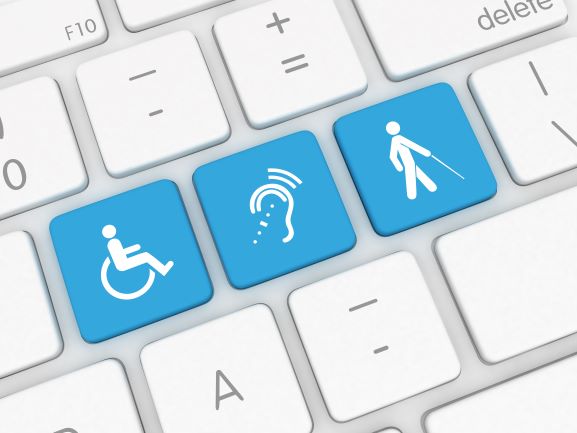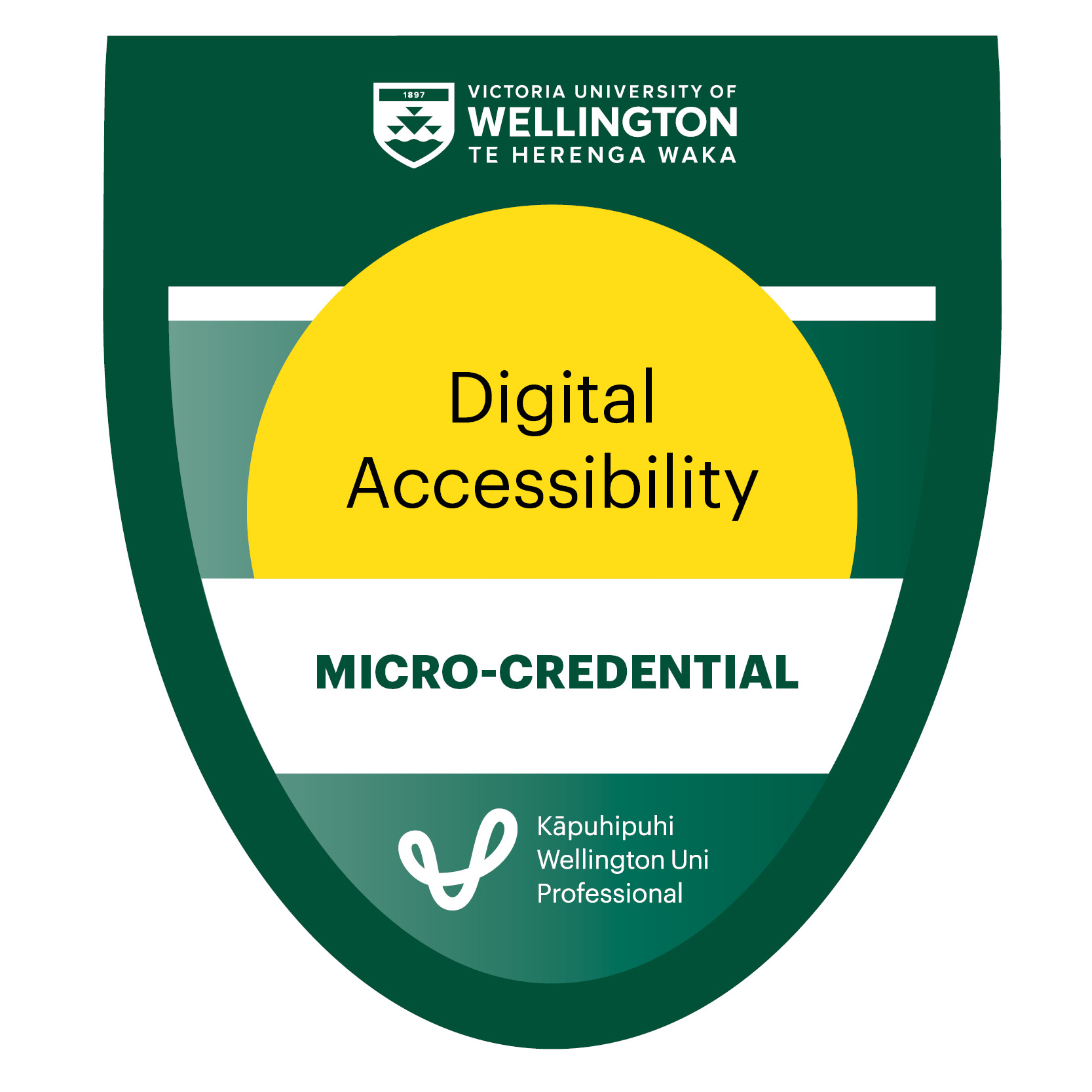Introduction to Digital Accessibility: Delivering inclusive digital content
Fundamentals of the government’s digital design and web standards, practice from both the academic and practitioner perspectives.

Course overview
This micro-credential will focus on developing the theoretical, legislative and practical knowledge of public, private and educational sector employees involved in the design, delivery or support of digital services and environments to public end users in New Zealand.
This course covers the relevant fundamentals of the government’s digital design and web standards, international accessibility standards/legislation and core industry best practice from both the academic and practitioner perspectives.
2026 dates coming soon. Register your interest to receive updates.
In partnership with
.png)

What you'll learn
- Factors that reduce the accessibility of digital content
- Cultural perspectives on accessibility
- Obligations and incentives to improve accessibility
- Implementing accessibility practices
- Perspectives from accessible technology experts, industry practitioners and end users
- How to recognise the key features, relevance and importance of accessible online information and services
- How to identify potential opportunities for accessibility improvement of digital information and services
- How to communicate concepts, standards and the good practice of accessible design through oral, written and visual methods
Course modules
- What is digital accessibility and why is it important?
- How can we design, develop and test content and services for accessibility?
- How can we effectively communicate best practice in digital accessibility?
Further Information
Format
This course is delivered fully online through a combination of live Zoom sessions and self-paced learning activities. Live sessions are interactive, combining presentations, group discussion, and practical exercises. You’ll have access to an online learning platform for readings, activities, and resources. Group size is limited to ensure active participation.
This micro-credential is total of approximately 50 hours of learning made up of:
- 3 x 3-hour live online workshops in weeks 1, 3 and 5 of the course. These workshops will be active and project-based and will focus on enhancing and providing a critical lens to the online activities. Each workshop will relate to one of the critical questions. In week 6 of the course, there will be a final 1 x 3-hour student presentation session.
- Self-paced learning activities
- Self-study and assessment tasks
Workload and Assessment
This micro-credential involves approximately 50 hours of total learning, including self-paced online modules, live sessions, and application tasks.
Assessments include:
- Three (out of four) weekly blog posts and peer reflections on core concepts, readings and online content (250-words each) 60%
- A final presentation on the development of an accessibility resource (10 minutes including 3 minutes Q & A and feedback from classmates) 40%
All assessments requirements must be completed to pass and earn credit.
What You'll Receive
This course is a university-approved micro-credential worth 5 NZQA Level 7 credits, assessed to meet academic and industry standards. Upon successful completion, you will receive:
- A digital badge
- A digital certificate
- Academic credit recorded on your official Victoria University of Wellington academic transcript
All credentials include the total CPD/PLD hours completed.
University credits achieved may be used through ‘credit transfer’ to stack towards future qualifications. These digital credentials are portable, verifiable, and designed to support both your current role and long-term career advancement.

What is a micro-credential?
A micro-credential is a formal credential that acknowledges specific skills and knowledge gained through learning programme or activity. These credentials are assessed and meet industry standards, allowing you to demonstrate mastery in particular areas. Our micro-credentials carry University credit at a defined level (eg undergraduate or postgraduate) and credit may be used towards further learning. Micro-credentials are designed to be stackable, creating a pathway to further qualifications or career advancement.







